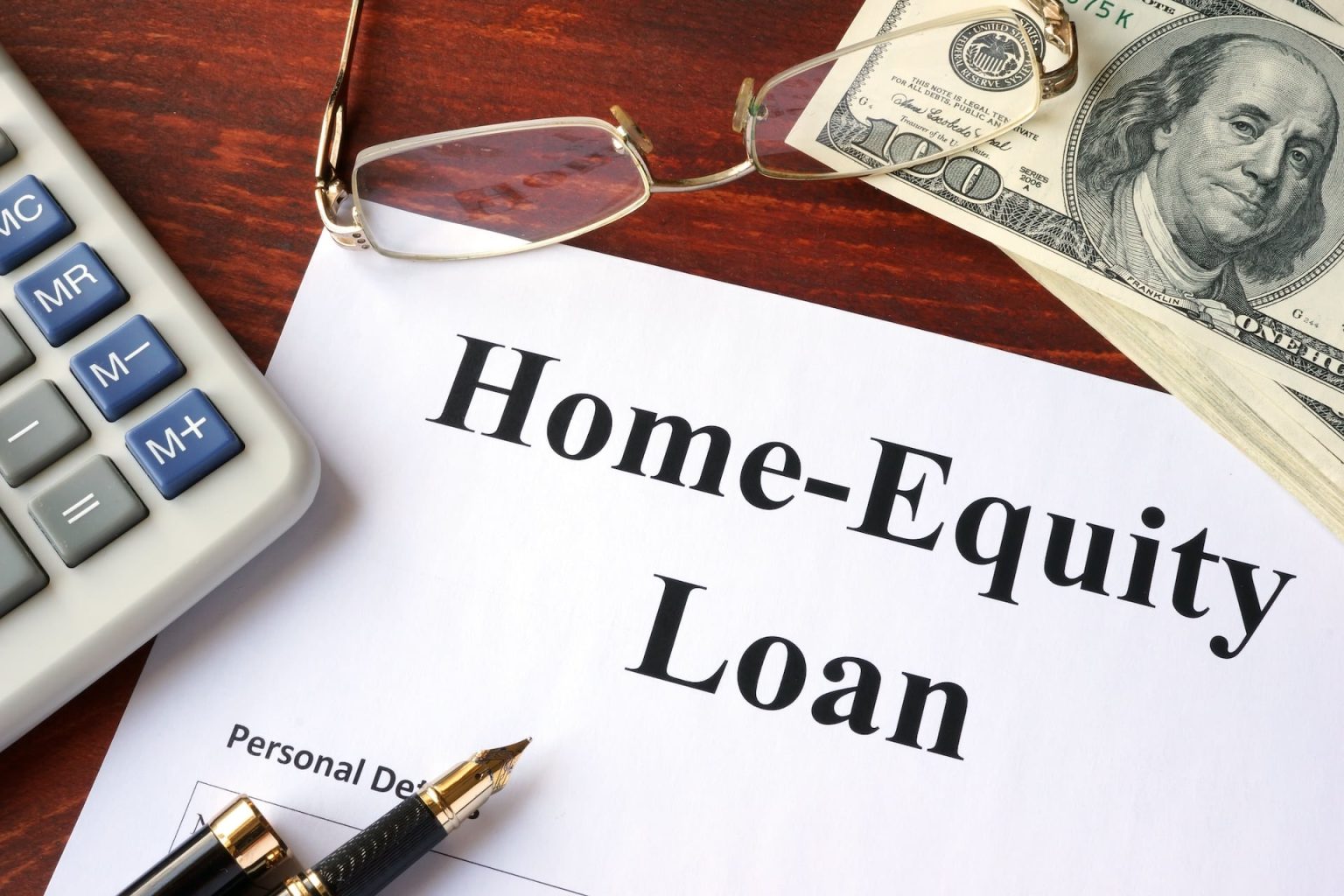Credit Sesame defines the home equity loan and discusses how to unlock value in your home.
Rising home values in your area could be a cause for celebration — but what if you don’t want to sell your home? You may still tap your newfound home equity by borrowing against it. Home equity can be the cheapest way to pull off a remodeling project, consolidate high-interest debt, start a business, or pay for any big-ticket purchase. Here’s what it takes to convert home equity into useful money.
How do home equity loans work?
Home equity is the difference between your property value and the total of loans against it. If you owe $200,000 on a house valued at $350,000, you have $150,000 in home equity. Home equity financing allows you to borrow against some of it.
Home equity loans are mortgages, just like the mortgage you probably took out to buy your house. In fact, one name for home equity loans is “second mortgages.” Most home equity loans come with fixed interest rates and payments. You typically get between five and 20 years to repay these loans, but some programs give you up to 30 years to repay.
When you apply for a home equity loan, you complete the same form you did for your “first” mortgage. You go through a similar underwriting, escrow, and funding process. At closing, you receive a lump sum, which you begin repaying the following month.
Top uses for home equity loans
Home equity is a primary source of wealth for average American families. So, most personal finance advisors don’t recommend spending it casually. However, home equity is ideal for some uses — especially those that improve your financial or personal health. Here are some examples:
- Finance college tuition (assuming the degree pays off in the future)
- Fund a new business (do your homework to make sure it succeeds)
- Cover a remodeling project (consider how much home equity the project will add)
- Add an additional dwelling unit (ADU) for rental income
- Buy a vacation cabin or tiny home
- Pay for an expensive medical procedure like a knee replacement
- Consolidate high-interest debt (only if you address overspending problems first)
Home equity is a popular source of financing because interest rates are lower, and longer loan terms make payments more affordable.
How much can you borrow with a home equity loan?
To see how much cash you can unlock with a home equity loan, you must first understand two terms — loan to value, or LTV, and combined loan to value, or CLTV. Home equity lenders use both of these terms when underwriting your loan application.
Loan to value (LTV) is the ratio of your first mortgage balance to your property value. If you have a $100,000 home with an $80,000 mortgage, your LTV = $80k / $100k = .8, or 80%.
Combined loan to value, or CLTV, equals the total of all loans against your home divided by its current value. So if you took out a $10,000 second mortgage against your $100,000 home, your CLTV = ($80,000 + $10,000) / $100,000 = .9 or 90%.
Most lenders allow CLTVs of 80% to 90% when underwriting home equity loans. Generally, the less risky you are, the more lenders let you borrow. To see how much you could borrow with a home equity loan, take these steps:
- Get an estimate of your home value. You can find many online estimators or ask a local real estate agent.
- Multiply your estimated home value by 80%, 85% or 90%.
- Subtract your current mortgage balance.
If your home is worth $400,000 and you owe $300,000, your maximum home equity loan amounts would be as follows:
- ($400k * 0.80) – $300k = $20,000
- ($400k * 0.85) – $300k = $40,000
- ($400k * 0.90) – $300k = $60,000
Home equity loan costs and interest rates
Home equity loan interest rates are higher than first mortgage interest rates. Second mortgages are riskier than first mortgages because their lenders are in the second position. Here’s how the second position works: if you have one mortgage and don’t make your payments, your lender can sell your home and probably recoup its money. But a lender with a second mortgage only gets repaid after the first lender gets its money — if there’s enough left over.
The fees for a home equity loan run lower than those for a first mortgage. You need title insurance and escrow services, which may cost a few hundred dollars instead of thousands. Your lender may require a full home appraisal, which costs several hundred dollars, or it may use an in-house valuation program or request an inexpensive “drive-by” or “desk” service from a licensed appraiser.
When comparing home equity loan programs, look at the bottom line. You needn’t care what the fees are called, but your total costs and interest rate matter. Compare identical loan programs — 15-year-fixed to 15-year-fixed, etc. Then look at the loans’ APRs, or annual percentage rates. The APR includes the interest charged plus loan fees. That makes it easier to compare offers. Another way is to fix one side of the equation — tell every lender that you want a loan at 6% and see what each lender charges to get it. Or ask for a loan at zero cost and see what rate each lender offers you.
How to get a home equity loan
It takes several simple steps to get a home equity loan. First, do a little homework:
- Check your credit score for free. Lenders need it to give you a meaningful interest rate quote.
- Estimate your home value with one of many online property value estimators or ask a local real estate agent.
- Get your current mortgage balance. It’s probably on your credit report, or you can call your lender.
- Contact several home equity lenders to see if they offer the loan amount and teat you want. Get a written Loan Estimate (LE) disclosure or a loan scenario for those who make the cut.
- Compare loans and costs among programs and choose a lender.
Gather documents proving your income and assets. That probably means a recent pay stub or tax return and copies of all account statements. Next, you complete an application. Usually, that’s Fannie Mae Form 1003. Expect to provide employment and address information going back at least two years. You are asked about debts and assets, including real estate you own and all bank, investment, and retirement accounts. You may have to pay fees for a credit report and/or appraisal.
Your lender will probably use automated underwriting systems (AUS) to get a preliminary decision. If you receive approval (yay), you are given a list of documents and information needed to finalize your approval and close your loan. It’s important to clear these conditions ASAP, or your loan will stall. Once you have final loan approval from a human underwriter, the lender draws up loan documents for your signature. Make sure that the final loan application is correct because you’re responsible for whatever you sign. Double-check the loan amount, interest rate, term, and fees to ensure no surprises.
Once you sign everything, you have three days to rescind (cancel) your loan if you choose. Federal law requires the lender to wait these three days before funding your loan. After the rescission period, you either get a check or an electronic fund transfer. Or, if you’re consolidating debt, the lender might pay off your accounts directly. The county recorder’s office makes it official, and you’re done.
Home equity loan alternatives
In addition to the standard home equity loan, there are other home equity products, the HELOC and convertible HELOC.
The HELOC, or home equity line of credit, is another way to borrow against your home equity. Instead of a lump sum, you get a line of credit to tap and repay as needed. Most HELOCs come with variable interest rates, but some newer products offer fixed interest rates. A HELOC may be better than a home equity loan if you don’t need a lump sum all at once. They let you pay interest only on the amounts you use.
HELOCs, unlike standard home equity loans, have two phases — the draw period and the repayment period. During the draw period, you use the credit line like a credit card, draw on it, and make minimum payments. But once you enter the repayment period, you can’t tap the credit line, and you must repay it in full over the remaining loan term. This can cause the monthly payment to increase sharply.
Convertible HELOCs have variable interest rates but allow you to convert the loan to a fixed home equity loan at one or more times. This can make a HELOC safer and more predictable.
The last way to tap home equity is the cash-out refinance mortgage. Cash-out refinancing means refinancing your current mortgage with a larger home loan and taking the difference in cash. Cash-out refinancing is usually much more expensive than traditional refinancing because fees apply to the entire loan–not just the cash-out. If you want to refinance your current home mortgage and get additional cash, it’s probably cheaper to refinance your first mortgage and then add a home equity loan for the cash.
If you enjoyed Home equity loan: The secret to unlocking your home’s hidden value, you may like,
Disclaimer: The article and information provided here is for informational purposes only and is not intended as a substitute for professional advice.
Read the full article here










